Stump Puffball / Summer / Autumn / Edible
Description
An easy to identify mushroom, they are very common and can often be found in huge numbers.
Scientific Name
Lycoperdon Pyriforme
Common Names
Stump Puffball, Pear-shaped Puffball
Family
Agaricaceae
Habitat
They are saprobic feasting on dead wood, logs and stumps, they typically grow in large clumps. Mainly found in broadleaf woodlands but they do also grow on pines and spruce.
They are the only Puffball to grow on dead wood rather than on soil.
Identifying Features:
Cap:
The fruiting body is more pestle or pear-shaped than some other puffballs, they are off white when young but will darken with age and develop a darker central umbo as they get ready to release their spores. The flesh is pure white when young turning green/brown with age.
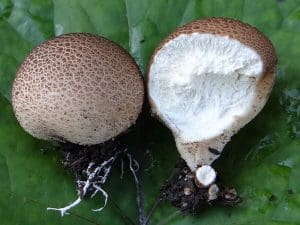
Stem:
A similar colour to the main fruiting body, short and more like an upturned cone. The base of the stem is attached to the stump by means of rhizomorphs (thick, root-like strands of mycelium)
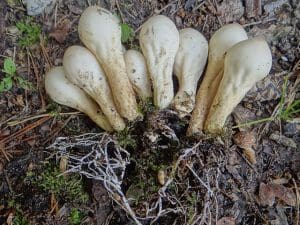
Smell:
They give off an unpleasant almost gassy smell when they are cut.
Spores:
Olive green to brown.
Uses
In food
Like many other members of the family they don’t have the strongest flavour so they are probably best mixed with other stronger tasting mushrooms.
My favourite way to eat them is to cut them into bite sized pieces, dip them into flour, egg and then breadcrumbs and deep fry them as a vegan friendly ‘chicken nugget’ alternative.
Some do remove the tougher outer skin but I tend not to as its fiddly.
Harvesting
They can be found in huge numbers so a great mushroom to be familiar with. Like all puffballs avoid any that have begun to turn yellow, green or brown as they will be unpleasant to eat.
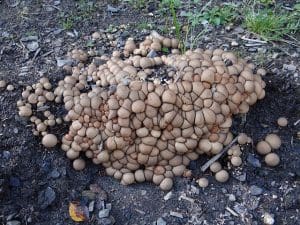
Known hazards
The spores have been known to trigger a disease called lycoperdonosis when they are inhaled so care should be taken especially with mature examples.
Potential lookalikes
Other members of the Lycopodium family, all are edible as long as they are still, pure white in the middle.
Death caps (Amanita Phalloides) but when these are cut in half you will see an immature mushroom ready to burst free.
The Common Earthball (Scleroderma Citrinum) they tend to be firmer in texture and when cut in half you will see a mass of purple/black spores.
The Common Stinkhorn (Phallus Impudicus) can also like similar when they are young, but when cut in half will reveal the ‘witches eye’ rather than being pure white.
Extra Notes
Lycoperdonosis is a respiratory disease caused by the inhalation of large amounts of spores from mature puffballs. Symptoms can include cough, fever, shortness of breath and fatigue. The disease is rare mostly due to the amount of spores that would need to be inhaled but care should still be taken. It has also been known to affect dogs that have been playing or digging near puffballs.



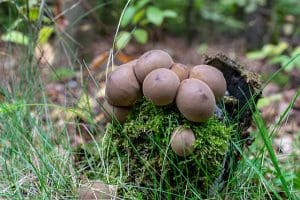
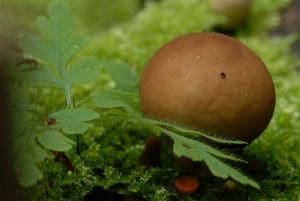



Leave a Reply
You must be logged in to post a comment.